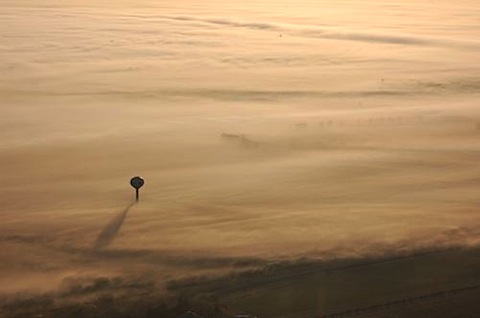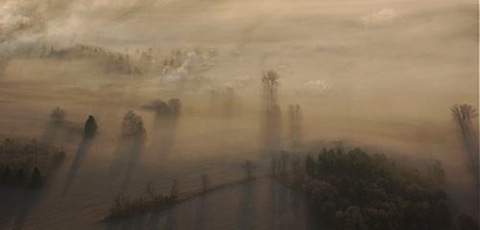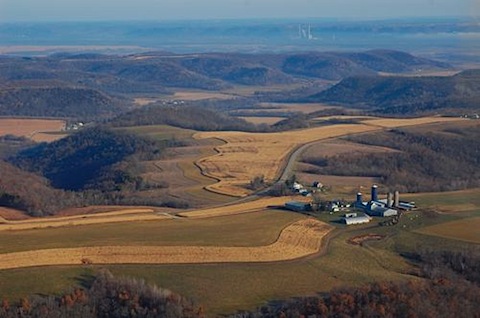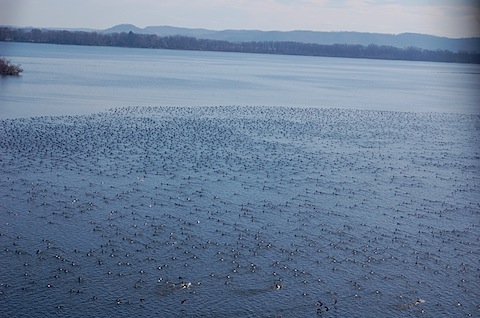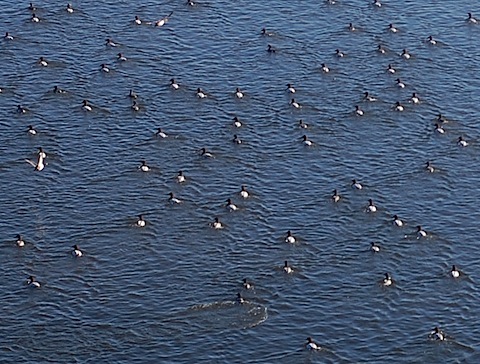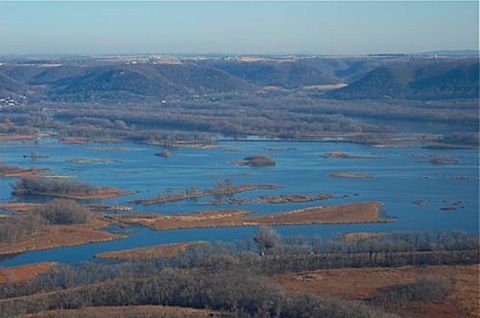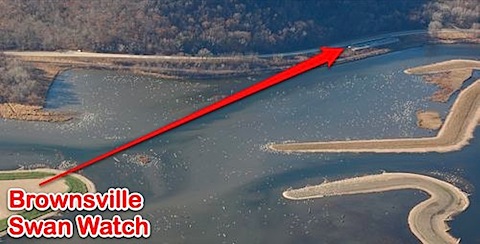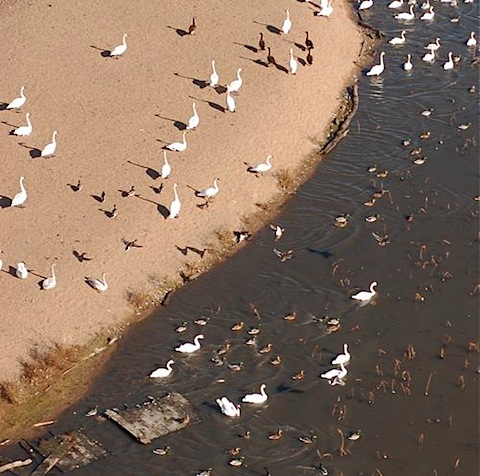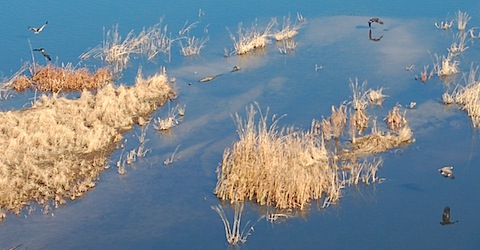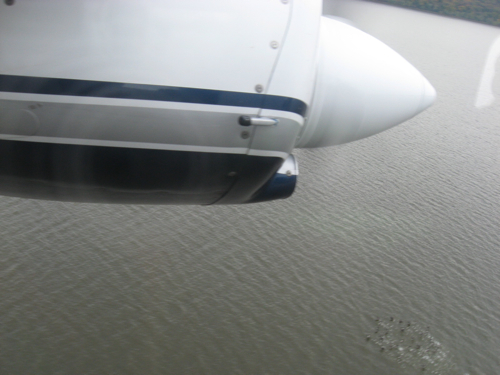 Monday was our first flight out for our annual fall waterfowl surveys on the upper Mississippi. This is our initial flight to get back into the swing of things, make sure our maps are correct and to get a refresher course on identifying and counting waterfowl while flying over them. Last year my route went from around Hastings to Lake City. This year, there were some staffing changes and now my part of the surveys go all the way down to Brownsville, MN.
Monday was our first flight out for our annual fall waterfowl surveys on the upper Mississippi. This is our initial flight to get back into the swing of things, make sure our maps are correct and to get a refresher course on identifying and counting waterfowl while flying over them. Last year my route went from around Hastings to Lake City. This year, there were some staffing changes and now my part of the surveys go all the way down to Brownsville, MN.

We had some heavy rains last week and parts of the Mississippi River and the Minnesota River are flooding. In downtown St. Paul, the Mississippi is expected to crest at 18.5 feet by Friday. That will be in the top ten highest crests of recorded history.

We saw several areas affected by the flooding Mississippi south of St. Paul. The above photos are cows working to stay high and dry.

American white pelicans and double-crested cormorants were some of the most common species that we observed. They are mercifully some of the easiest birds to identify--especially those pelicans.

There were also quite a few great egrets staging for migration. Unlike other types of waterfowl, they tend to gather in loose flocks. They do not bunch together like pelicans, each egret appears to need its own fishing space. But these loose flocks are a sign that they will be gone soon. We saw far more egrets than great blue herons.

We did see some ducks. Can you make out any different species? The big white ones are easier--those are pelicans. The rest are mostly American wigeon with a few gadwall mixed in with a few coots too. It's all about wing pattern. The wigeon are the bird with the white wing patches with a dark patch below the white. The gadwall just have a white patch.

We even found a few small groups of ruddy ducks too. They don't have the bright blue bills right now but they have those big white cheek patches which makes them obvious when we fly over--which I love.

And so we're off with our counting. I'll be curious to see how the flooding affects our surveys in the first few weeks. I'll admit, I'm a bit nervous about the sheer number of birds we'll be counting, but I'm learning some techniques that seem small but help a great deal. One technique is when you see a huge flock of 3000 ducks and it's mixed--say 3000 and give percentages of species. We fly to fast to do it any other way.
Now, as long as my stomach stays settled and I don't get motion sickness, I'll be good to go.
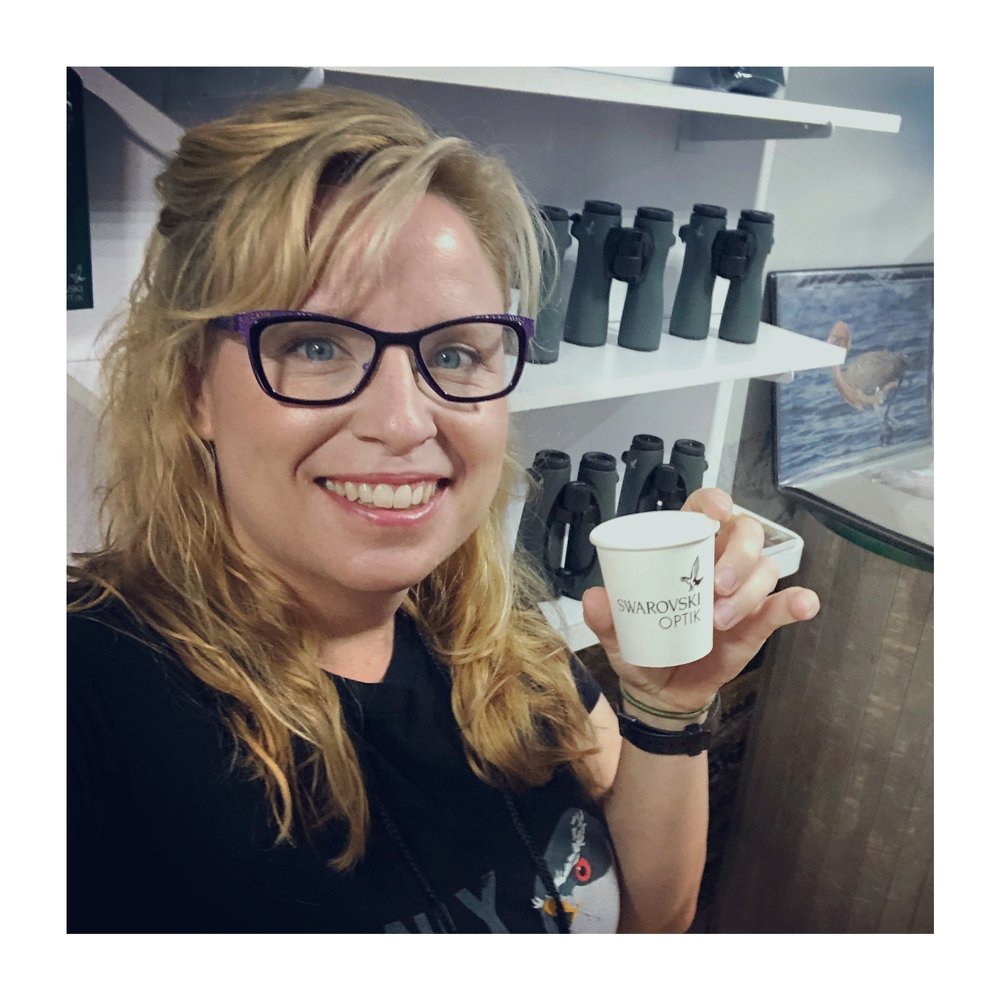
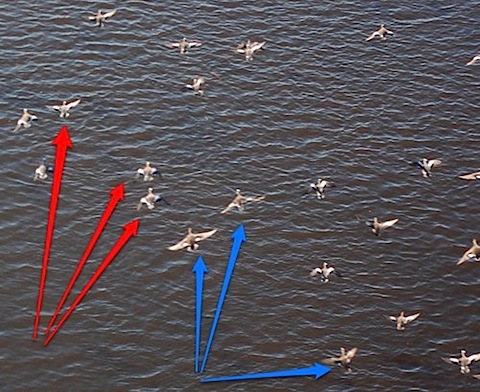
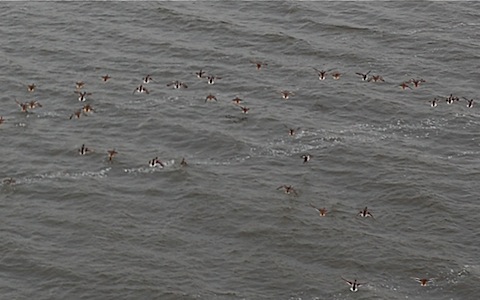
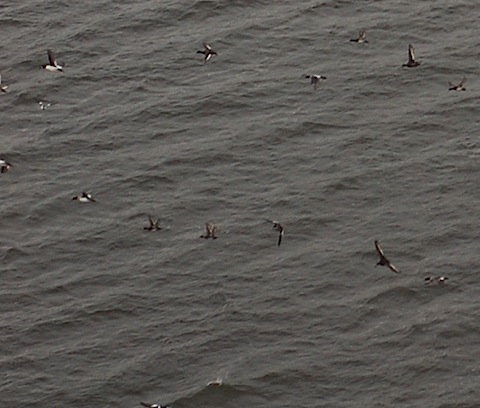
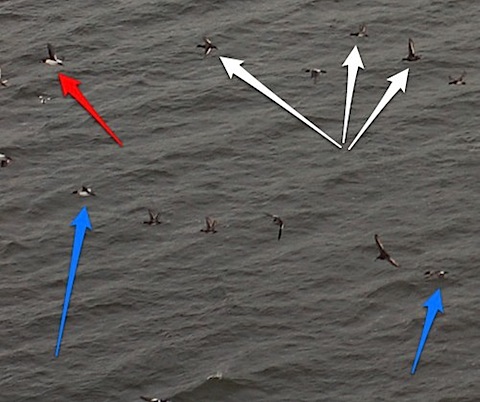
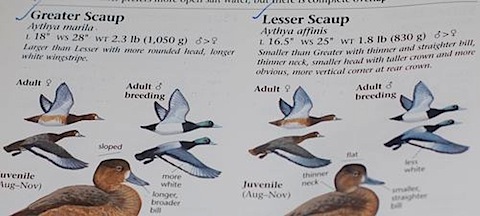
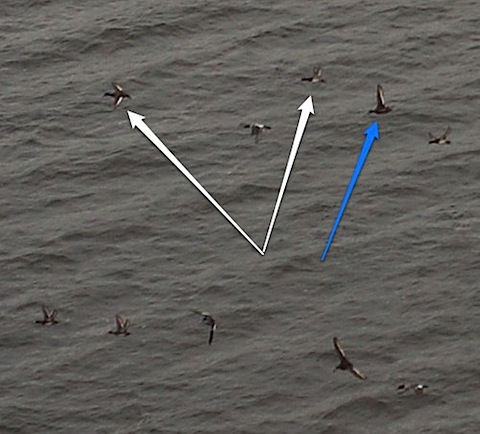
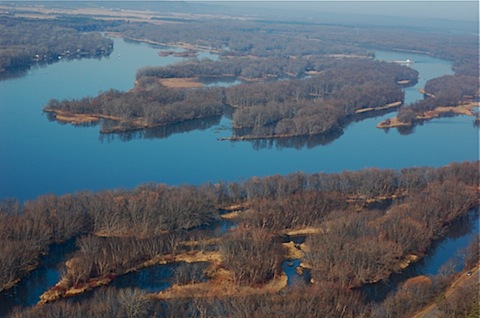 Doing aerial waterfowl surveys is hard work. It's a lot like shorebird identification, you can't just rely on colors, it's more general size, shape and impression--that's right giss birding! I'm told that the hard part for many on these surveys is not getting motion sick in the plane. I can't imagine being motion sick and trying to id and count large amounts of birds literally on the fly. Ick. Fortunately, for me as long as I'm not chugging martinis the night before and if I keep some snacks handy, nausea avoids me. When I first learned that I would be doing these surveys, I was given six hand illustrations of ducks to study and I searched Google Images to find photos of ducks taken from aerial surveys to make flash cards...there aren't too many images like that out there. My hope is that someone who gets to do this in the future, finds this blog entry and has some chance of learning what to watch for the first time they go up. The truth is, nothing really trains you like having an experienced eye with you the first few times you fly to help you learn your birds.
Doing aerial waterfowl surveys is hard work. It's a lot like shorebird identification, you can't just rely on colors, it's more general size, shape and impression--that's right giss birding! I'm told that the hard part for many on these surveys is not getting motion sick in the plane. I can't imagine being motion sick and trying to id and count large amounts of birds literally on the fly. Ick. Fortunately, for me as long as I'm not chugging martinis the night before and if I keep some snacks handy, nausea avoids me. When I first learned that I would be doing these surveys, I was given six hand illustrations of ducks to study and I searched Google Images to find photos of ducks taken from aerial surveys to make flash cards...there aren't too many images like that out there. My hope is that someone who gets to do this in the future, finds this blog entry and has some chance of learning what to watch for the first time they go up. The truth is, nothing really trains you like having an experienced eye with you the first few times you fly to help you learn your birds.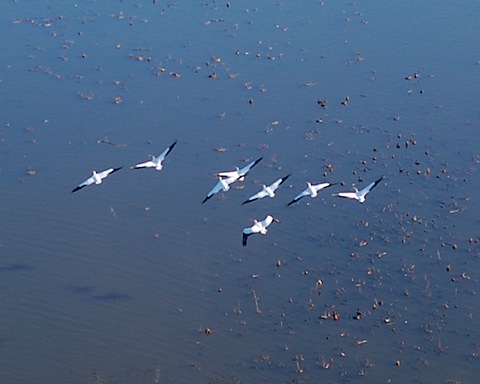
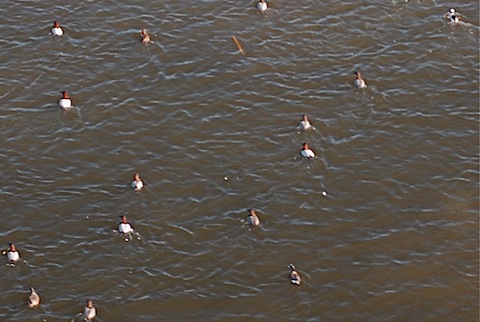
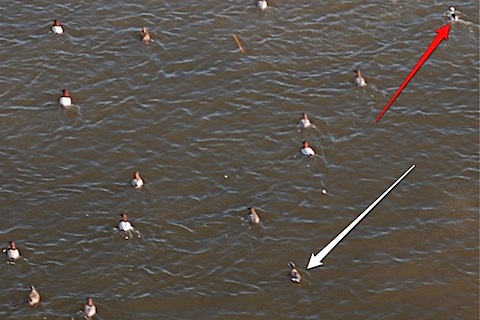
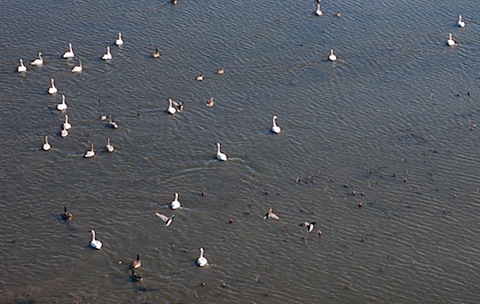
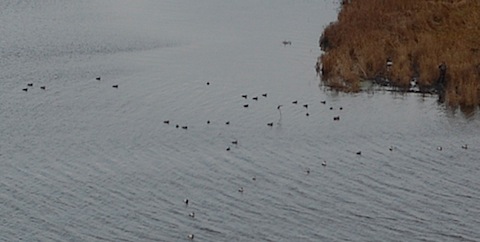
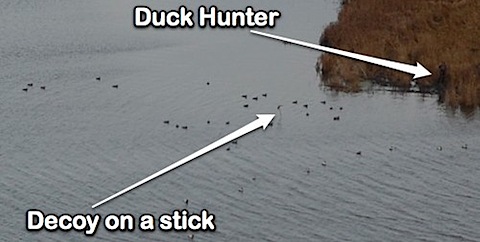

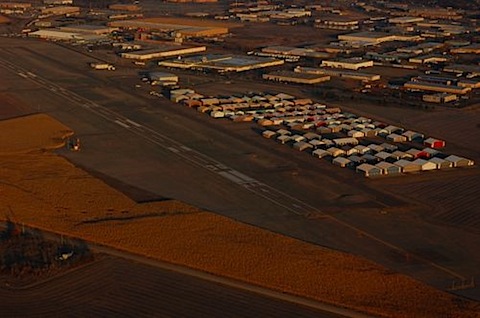 I was planning on Monday being a busy day: wake up and meet the pilot and fellow counter at the small airport at 7am, count ducks for 2 hours, tweak an article due that day, take our new Kia in to our mechanic for the final approval, edit photos, have all my lines memorized because our rehearsal that night was our first night off book and if there was time a quick bike ride before winter sets in for real. A busy day, but nothing outlandish. The day started out well, as we left the tiny Lakeville airport, the skies were clear, all looked perfect for a morning of counting waterfowl on the Mississippi.
I was planning on Monday being a busy day: wake up and meet the pilot and fellow counter at the small airport at 7am, count ducks for 2 hours, tweak an article due that day, take our new Kia in to our mechanic for the final approval, edit photos, have all my lines memorized because our rehearsal that night was our first night off book and if there was time a quick bike ride before winter sets in for real. A busy day, but nothing outlandish. The day started out well, as we left the tiny Lakeville airport, the skies were clear, all looked perfect for a morning of counting waterfowl on the Mississippi.